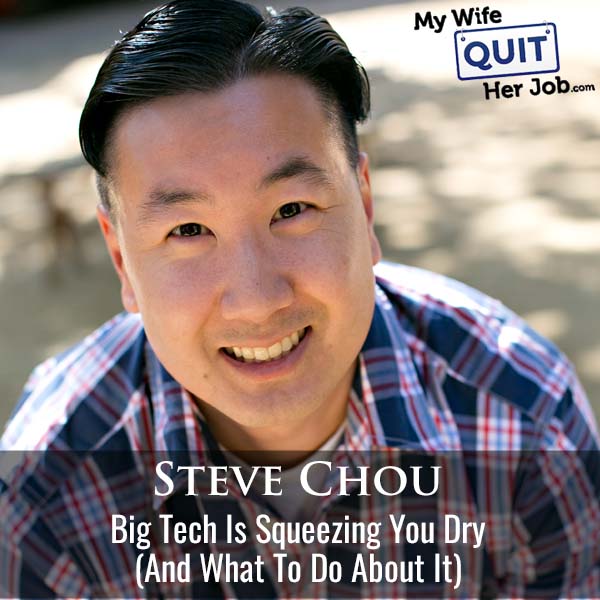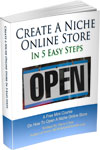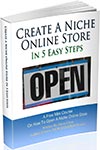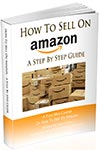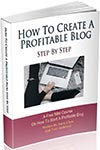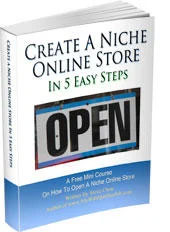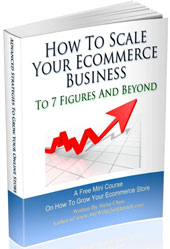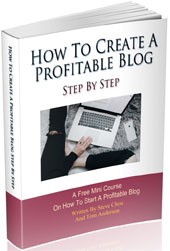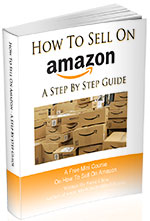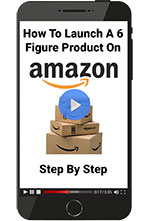Podcast: Download (Duration: 12:37 — 14.7MB)
Amazon sucks right now, Ebay sucks right now, Etsy sucks, Facebook sucks, Instagram sucks, Google sucks.
Every big tech company continues to deteriorate in front of our eyes every single day. All of these services that we use to start a business, advertise and sell online are worse than you think, and here’s what you need to do about it.
Get My Free Mini Course On How To Start A Successful Ecommerce Store
If you are interested in starting an ecommerce business, I put together a comprehensive package of resources that will help you launch your own online store from complete scratch. Be sure to grab it before you leave!
What You’ll Learn
- The Pattern Of Big Tech
- The Number 1 Lesson I’ve Learned Over The Years
- How To Deal With Change
Sponsors
SellersSummit.com – The Sellers Summit is the ecommerce conference that I’ve run for the past 8 years. It’s small and intimate and you’ll learn a ton! Click Here To Grab The Recordings.
The Family First Entrepreneur – Purchase my Wall Street Journal Bestselling book and receive $690 in free bonuses! Click here to redeem the bonuses
Transcript
You’re listening to the My Wife, Quit or Job podcast, the show where I cover all the latest strategies and current events related to e-commerce and online businesses. And today, I’m going to talk about the crapification of all big tech companies, how it’s affecting your business and what you can do about it. Enjoy the episode. But before we begin, if you haven’t picked up my Wall Street Journal bestselling book, The Family First Entrepreneur yet, it’s on Amazon right now at 38 % off. My book will teach you how to achieve financial freedom.
00:26
by starting a business that doesn’t require you to work yourself to death. Plus, you can still grab my free bonus workshop on how to sell print on demand and how to make passive income with blogging, YouTube, and podcasting when you grab the book over at mywifequitterjob.com slash book. So go over to mywifequitterjob.com slash book, fill out the form, and I’ll send you the bonuses right away. Now onto the show.
00:53
Welcome to the My Wife Could Her Job podcast. Now this episode’s gonna be a little bit different than some of the other ones on the show because I’m gonna go on a little rant, but I promise you that there will be a good lesson at the very end. Now is it just me or is every big tech company going to crap? Amazon sucks right now, eBay sucks, Etsy sucks, Facebook sucks, Shopify sucks. Every company continues to get worse and charge higher fees as they nickel and dime you to death. And they all follow the same exact pattern.
01:24
When any these companies first start out, their only chance of succeeding is to go above and beyond for their users by solving a key problem. And as a result, their service is amazing in the beginning. But then as it becomes more more successful, their service slowly gets worse and more expensive. Let’s pick on Amazon, since I’ve been selling on Amazon for over a decade now. When Amazon first started the Amazon FBA program over a decade ago, I remember thinking to myself, this is a great thing.
01:51
Most e-commerce sellers don’t want to deal with inventory and customer service, and Amazon was willing to store and ship your inventory at a very reasonable price. In fact, back then it was a no-brainer to use FBA. You simply have your goods sent to an Amazon fulfillment center, you focus on marketing and optimizing your product listings, and Amazon does the rest. Now back in 2010, the Amazon FBA fees were a very small percentage of your revenue, and you could ship in as many or as few products as you wanted to.
02:20
without any additional fees. Amazon had tons of warehouse space and they were literally begging people to try out the Amazon FBA program. Soon after, it’s not surprising how many people flocked to selling on Amazon FBA. You got free prime shipping for your customers, Amazon offered crazy low UPS shipping rates to their warehouse, and everyone was making money hand over fist. In fact, within just a couple of years of Amazon FBA becoming popular, everyone and their mother started offering Amazon FBA courses
02:49
because selling at Amazon was like having a private ATM machine. All you had to do was go on Alibaba, import some products, send it to Amazon, and make instant cash without having to deal with any inventory. Amazon became the everything store and the de facto place to shop, and sellers were making lots of money. It was a win-win all around. But then things changed. As soon as Amazon had a foothold on the buyers completely locked into shopping on their platform, they switched their focus to acquiring more sellers.
03:19
And because of Amazon’s generous return policy and low prices, they knew shoppers weren’t going anywhere. And if Amazon could manage to control both the sellers and the buyers, they would own the entire e-commerce market. The buyers would stay because of the vast selection, low prices, and a generous return policy, and the sellers would stay because that’s where the customers were shopping. And that’s when they decided to start recruiting Chinese sellers heavily in 2016.
03:45
Amazon invested tons of resources into programs like the Dragon Boat program, which allowed Chinese sellers a fast track directly into Amazon’s fulfillment centers in the United States. All of a sudden, a factory in China could, with Amazon’s help, sell directly on amazon.com in the US and bypass the Minimal Man directly. And within about three years, Chinese sellers flooded the platform with dirt cheap products that very few US sellers could match in price. They started knocking off existing sellers
04:13
blatantly copying their IP, gaming the reviews, the rankings, everything. And Amazon just sat there and basically did nothing for many years. Now from Amazon’s point of view, as long as buyers were happy, it didn’t matter if legitimate hardworking sellers went out of business because there would instantly be another seller to take their place. Amazon made money no matter what. But it didn’t stop there. After they knew they had the buyers and the sellers, after they knew they were by far the most convenient way to shop online,
04:42
and after they knew they had the best prices from suppliers in China, they added a third stage to their master plan. And this is the point where Amazon and every other big tech company in their position takes all the profit for themselves because A, they can, but also B, by the time a company reaches this stage, more than likely they’re a public company, which means that the decisions aren’t being made by one passionate founder any longer, but by many different shareholders instead.
05:10
And because shareholders aren’t as invested in the long-term health of the business, they just want the business to earn quick money so that their shares of stock are more valuable. Their objectives often boil down to how much can we squeeze the sellers to pay for fees up until the absolute limit of what they’re willing to, but not just past it? And then how do we get the buyer to continue buying while slowly deteriorating the quality of service? And this, my friends, is when the company goes to crap.
05:36
By the way, if you’re enjoying this episode so far, make sure you sign up for my free six day e-commerce mini course on how to start your own online store and stop depending on Amazon, which can be found either in the show notes or going to mywifequitterjob.com slash free. Now let’s look at the Amazon search results just as an example. Back in the good old days, you could get lots of free traffic on Amazon by ranking in Amazon search. But today, you’ll notice that the entire front page is flooded with ads.
06:03
and you actually have to scroll down to see the first organic search result. Today, if you perform just about any product search on Amazon, you’ll notice that the search results are about 50 % ads. Amazon charges sellers a fee to make their listing visible, and then they charge hefty fees when a sale is completed. For example, today, Amazon charges a 15 % referral fee, about a 10 to 15 % fee for Amazon FBA, and another 20 to 30 % for advertising, if you are lucky.
06:32
This year alone, Amazon started charging a brand new receiving fee in addition to other FBA fees. So basically, you now have to pay a fee between 21 cents to $6 per unit for Amazon to accept standard and large bulky products into their warehouse. And this fee is supposed to reflect the cost of distributing inventory to multiple fulfillment centers, but whatever. Amazon also introduced a low inventory surcharge. This fee applies if you consistently carry low levels of inventory of your products
07:01
relative to your unit sales. Now it’s one thing to get charged if you have too much inventory in Amazon’s warehouse, but now you get charged if you have too little inventory at Amazon as well. And here’s how the fee works. Let’s say you typically sell 1,000 units per month and you let your inventory levels slip to 500 units in stock. Well, this means that you’ll get charged a fee for those 500 units because Amazon wants you to have 1,000 units in stock. Now Amazon has tried to justify this fee because they need to place your inventory closer to customers across their network
07:30
but Amazon sellers are legitimately furious. Now let’s talk about how buying from Amazon has gone to crap next. I don’t know about you, but I rarely get my products within the Amazon Prime shipping window anymore, especially during the holiday season. This past Christmas, I don’t think I received more than 25 % of my packages within Amazon’s promised delivery window. Here’s another thing that I’ve noticed recently as well. Amazon sometimes has a minimum order quantity to get free Prime delivery, even though I’m a Prime member.
08:00
and they often pre-select the slower delivery option as default. Think about it, you’re paying a monthly subscription for unlimited Prime delivery, but then by default, you get the slower delivery method because you forgot to check the fast delivery radio button. I’ve actually accidentally gotten slower delivery by accident this way, and they also raised the price of Amazon Prime to $139 a year. Now to add insult to injury,
08:26
Most of the products on Amazon are now just cheap repackaged products from Alibaba, and you can’t really trust what you are buying. For example, one YouTuber who fixes electronics for a living purchased a bunch of different sets of five amp fuses from Amazon and found that none of them actually blew out at five amps. The product quality on Amazon has been deteriorating for years and Amazon doesn’t seem to care. 50 % of the top sellers on Amazon are from China and they violate trademark and copyright laws with impunity
08:55
and constantly game the system. This is what the crapification of a company looks like. Sellers are getting squeezed on fees and barely making any profit. Meanwhile, buyers are getting lower quality products from China with longer shipping times. Amazon makes money no matter what. Now here’s an interesting statistic. If you look at Amazon’s income report for 2023, Amazon’s Q4 earnings for third party seller revenue was $43.4 billion, which was up 20 % year over year.
09:24
But while Amazon’s Q4 earnings for third party seller revenue was up 20%, their online store revenue was only up 9%. This means that most of their profit was due to increased fees passed on to the sellers. Despite the increased fees, customer service for sellers is horrific. Back in the day when I first started selling on Amazon, you could actually get ahold of a human on the phone, but today it’s impossible. If you do manage to get a response from customer service, it’s always a canned response.
09:54
Anyway, I don’t want to just pick on Amazon. Facebook was equally as guilty of crapification. I can’t tell you how many times I’ve been burned by Facebook in the past two decades. Back when Facebook pages were delivering tons of traffic to websites, I invested an enormous amount of time to build up my fan page. But then overnight, Facebook nerfed the reach of all fan pages and forced people to pay for traffic. Shortly after that, Facebook groups became all the rage and once again,
10:22
I spent a lot of effort building up a private Facebook group of 20k users before Facebook pulled the plug on Facebook group reach in order to fill more advertising inventory. Now you’d think I would have learned after getting burned twice, but I fell for it yet again when Facebook released Facebook Messenger Marketing. The ability to send direct messages to users for free was extremely effective and I spent a lot of effort building up my Messenger subscriber list before Facebook decided to shut it down and charge people for messaging.
10:50
Here’s the number one lesson I’ve learned over the years. Every service starts out great and then goes to crap as soon as it gets big. It’s just a fact of life. And the million dollar question is, what can you do about it? Well, the secret to long-term success for your business is to ride the wave as it comes and then jump on newer waves as they appear. Running a business is never a stagnant affair and services and companies come and go. When Facebook started charging for Facebook Messenger, I moved on to SMS.
11:19
When Facebook nerfed their organic reach, I doubled down on email. And today, the focus of all my businesses is on owned marketing platforms. Now what is owned marketing? Basically, it’s a marketing channel or asset that you control entirely. For example, when you have a customer’s email address, you can email them as much as you want and no company can really stop you. The same goes with SMS. Now Amazon continues to squeeze all their sellers every year by increasing fees and introducing new ones. So guess what?
11:48
You should focus more of your efforts on your own website that you physically own. Right now, TikTok Shop and TikTok Organic Marketing is still the wild wild west. So you should try to catch the wave now before the platform turns to crap. As long as you expect the company to go to crap, that will keep you on your toes to find the next wave to jump on. Nothing lasts forever and you have to continue to evolve in order to stay in business. Hope you enjoyed this episode.
12:16
There are a lot of things changing this year and it’s been a little exhilarating for me. more information and resources, go over to mywifequitterjob.com slash episode 549. And if you’re interested in starting your own eCommerce store, head on over to mywifequitterjob.com and sign up for my free six day mini course. Just type in your email and I’ll send you the course right away. Thanks for listening.
I Need Your Help
If you enjoyed listening to this podcast, then please support me with a review on Apple Podcasts. It's easy and takes 1 minute! Just click here to head to Apple Podcasts and leave an honest rating and review of the podcast. Every review helps!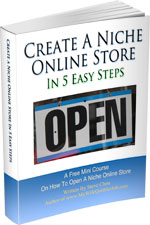
Ready To Get Serious About Starting An Online Business?
If you are really considering starting your own online business, then you have to check out my free mini course on How To Create A Niche Online Store In 5 Easy Steps.
In this 6 day mini course, I reveal the steps that my wife and I took to earn 100 thousand dollars in the span of just a year. Best of all, it's absolutely free!


